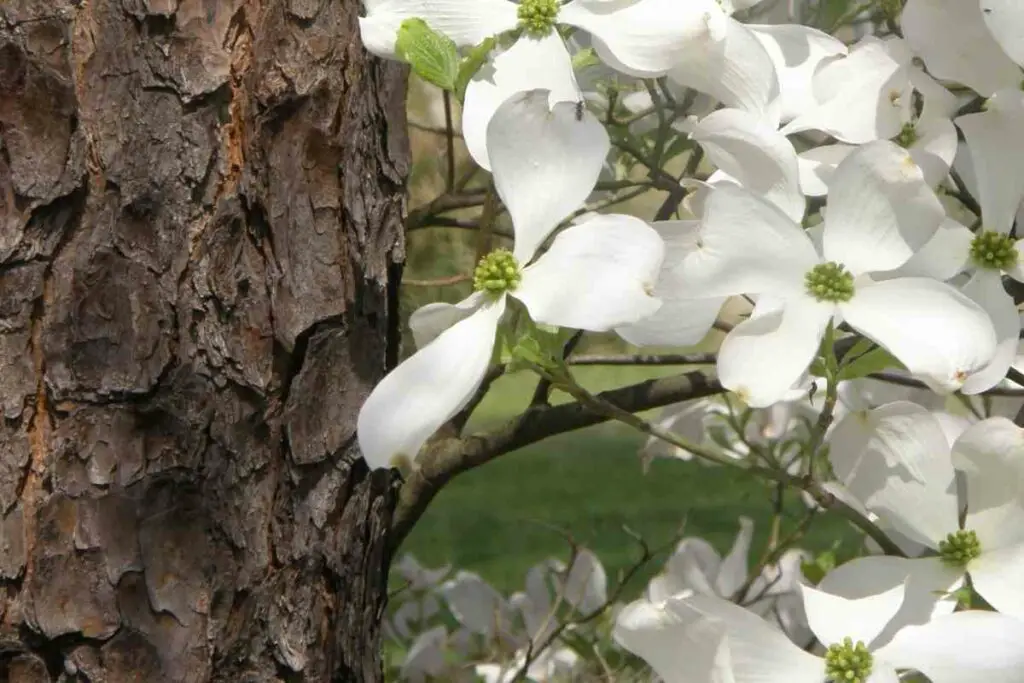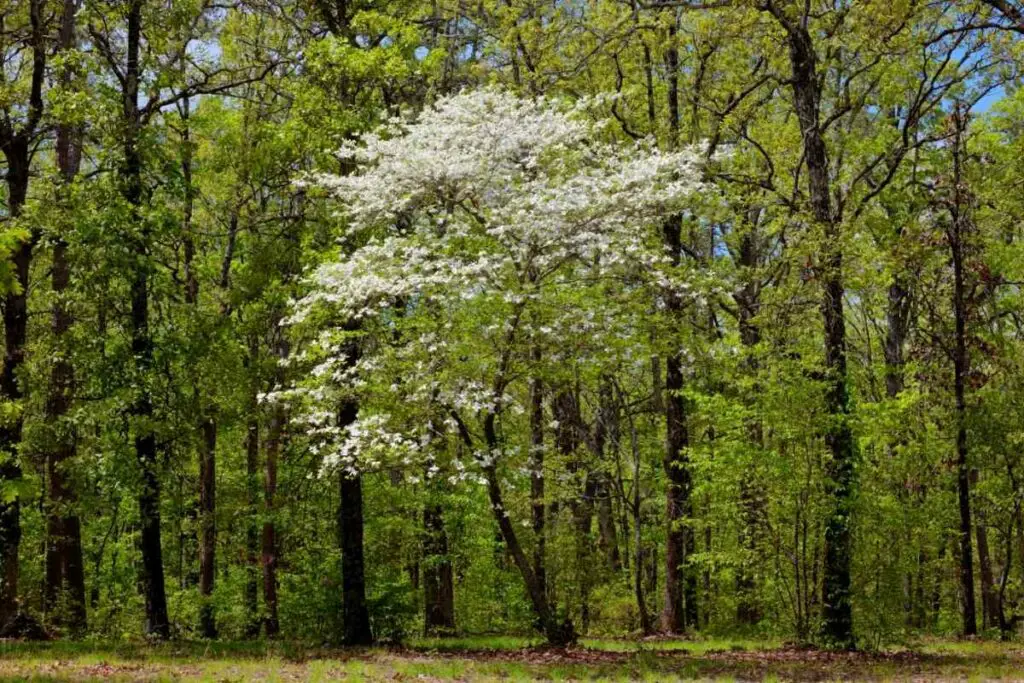Dogwood trees often get a bad reputation for being purportedly smelly, however, that’s not necessarily true. Though dogwoods are known to have a strong smell, it’s not often described as a bad smell. As is true with everything, everyone has an opinion.
The strong aroma that comes from dogwood trees is only detectable when it is in full bloom. Regardless of opinions on the smell, the dogwood tree blooms an immense canopy of pretty, white flowers that seemingly carpet the entire tree.
If Dogwood Trees Don’t Stink, Which Ones Do?
Perhaps one of the reasons that the dogwood tree has an ill-reputation for its odor, is because the Bradford Pear Tree, one of the smelliest trees in all of the tree family, looks so much like it. Maidenhair trees and the Chinese Chestnut are also known for their peculiar stench.
The Bradford Pear tree is so similar to the dogwood in appearance and even its flowers, that it’s easy to understand how people could mistake one for the other. Bradford Pear trees top nearly every single list of the world’s raunchiest smelling trees.
So it’s easy to see why dogwoods may have garnered such a reputation for bad-smelling flowers. Now, dogwoods do have a peculiar odor when it comes to their flowers, however, it’s hardly in the same league with Bradford Pears, Chinese Chestnuts, and Maidenhair trees.

Is There Anything Good About Dogwoods?
Aside from the mixed feelings on whether or not Dogwoods smell bad, they really do have some very appreciative features and uses. When they bloom, they’re truly a sight to see. Also, dogwood trees have been known to have medicinal uses for as long as there were written accounts.
In fact, Dogwood trees are still used in medicine today, albeit not as prevalently as they once were. According to plenty of literature on the subject, dogwood bark is good for headaches, fatigue, abdominal pain, diarrhea, and fever.
There is some evidence linking Dogwood as a healthy option against malaria, but there’s very little evidence to show for it. Dogwood is also a beautiful tree to look at in full bloom, almost as if someone placed a giant, delicate snowcap on its crown.
Are Dogwood Trees Cursed?
According to the Bible, the dogwood tree was once an immense and broad type of tree but once its wood was used to construct the cross upon which Jesus was crucified, it was forever cursed to be weak and unable to survive in straight sunlight.
While the curse itself is based on opinions, the dogwood tree isn’t a powerhouse of a tree for certain. It also has trouble growing in direct sunlight and can mostly be found amongst other, larger trees that offer it shade and protect it.
So, whether or not there really is a curse on dogwood trees could only be determined if a fossilized dogwood tree that was decidedly immense and powerful was found in the fossil record. As of this writing, that hasn’t happened.

What Trees With White Flowers Smell Bad?
Callery Pear trees are another in the lengthening list of white flower blooming trees that smell really bad. It’s also strange considering the fact that there are now two pear trees on the list of stinky trees, the Callery Pear and the Bradford Pear.
Maybe it has something to do with white flowers, a trait that Dogwoods, Callery Pears, and Bradford Pears all share, with the exception that Dogwoods don’t have pears and happen to be the least smelly of the bunch.
Pears are delicious fruits, depending on who you talk to, but apparently, the trees from which they grow don’t smell all that great.
Are Dogwood Trees Edible?
Asian Kousa Dogwoods produce an edible fruit that is supposedly pretty sweet and tasty. The same cannot be said of all Dogwoods, however. The remaining trees that happen to share the dogwood name are not healthy for humans to eat at all.
On the bright side, if you enjoy smoking your meats and vegetables, Dogwoods have a similar smoke flavor to that of oak. There isn’t much resin to deal with that typically dilutes the smoke flavor.
The Asian Kousa Dogwood is used in a variety of foods, especially in jellies, as its fruit makes it a good match for it.













